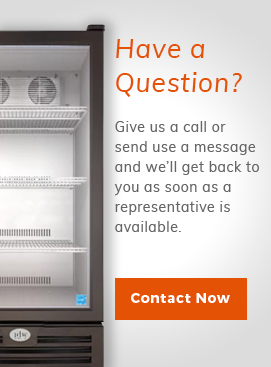Energy Star is a popular program run by the Environmental Protection Agency (EPA). The Energy Star program has sought to create a voluntary process through which equipment that passes the stringent testing will be considered Energy Star qualified. The Energy Star qualification is a highly sought-after mark of high energy efficiency and best-in-class design across a variety of electronic equipment and products. In this article, we’ll outline how the new requirements for commercial refrigeration units, known as Energy Star 4.0, differ from the previous Energy Star 3.0 requirements. Many of the new requirements in Energy Star 4.0 require commercial refrigeration manufacturers to make significant design changes in order to attain Energy Star compliance. Most notable among these changes was a movement towards more energy efficient refrigerants, such as hydrocarbons (HC’s). By adopting strict regulations for Energy Star 4.0 compliance, the EPA has forced commercial refrigeration companies to innovate in both design and manufacturing to produce extremely energy efficient units.
The Energy Star program was begun in 1992 by the EPA in an effort to encourage manufacturers to design more energy efficient electronics goods. The Energy Star program began by creating guidelines for computers and monitors, and quickly began adding new lines of Energy Star qualified electronics. By the early 2000s, the Energy Star program incorporated a Commercial Refrigeration and Freezer product category, and began working with the commercial refrigeration industry to make improvements in efficiency. Over the course of the last 15 years, the Energy Star program has revised their requirements for qualification. Most recently, Energy Star 4.0 was released on March 27, 2017 alongside Department of Energy (DOE) 2017 regulations which also impacted the refrigeration industry. Prior to Energy Star 4.0, Energy Star 3.0 guidelines were released in 2013, and took effect on October 1, 2014. The relatively little amount of time between these two sets of guidelines is notable, as is the decision by the Energy Star program to release their new 4.0 guidelines on the same day as the DOE regulations.
The DOE 2017 regulations were a milestone for efficiency standards in commercial refrigeration units in the United States. These regulations brought the mandatory minimum efficiency of all refrigeration models up to levels consistent with the Energy Star 3.0 guidelines released in 2013, effectively making even non-Energy Star qualified equipment as efficient as previous generation Energy Star 3.0 equipment. The DOE 2017 regulations forced commercial refrigeration manufacturers to redesign and rethink their equipment from the ground up in order to maintain regulatory compliance. The main difference between the DOE 2017 regulations and the Energy Star 4.0 guidelines, and consequently between Energy Star 3.0 and 4.0, is a significant increase in efficiency standards. Energy Star 4.0 sought to drive even greater innovation in the field of commercial refrigeration by requiring commercial refrigeration units that hoped to be Energy Star 4.0 qualified to operate between 17-40% more efficiently than Energy Star 3.0 compliant units. In order to attain the coveted Energy Star qualification, refrigeration manufacturers had to redesign entire units. This meant that not only were they required to utilize more energy efficient refrigerants, such as HC’s and propane, but also to examine other areas where efficiency could be boosted. These included replacing standard lights with efficient LED lighting, redesigned light sensors, more efficient fans, more robust insulation, and cutting-edge compressors. All of these components were required to be best in class for efficiency in order to reach thresholds that met the Energy Star 4.0 guidelines.
When discussing the differences between Energy Star 4.0 and 3.0, it is important to note that the Energy Star guidelines are merely thresholds for efficiency. How manufacturers meet those thresholds is left up to them, so long as they maintain compliance with DOE 2017 regulations. This has created space for the innovation and change that is now being seen in the commercial refrigeration sector. Many commercial refrigeration manufacturers are also designing and building a variety of units (single door, double door, POP, countertop, etc.) to exceed even the stringent Energy Star 4.0 requirements. These forward-thinking companies are looking to make substantive changes to refrigeration design that allows models to maintain compliance with future regulatory changes that require even greater increases in efficiency and further regulate the use of refrigerants with ozone layer impact and global warming potential.


